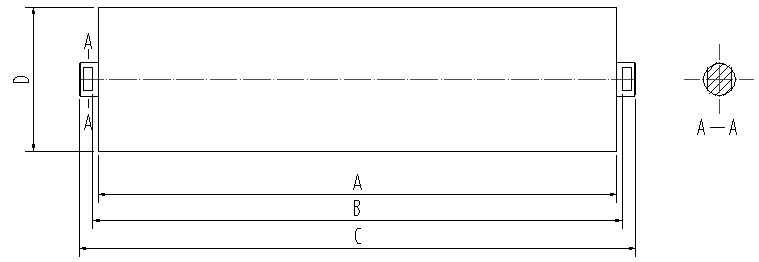 Afrikaans
Afrikaans  Albanian
Albanian  Amharic
Amharic  Arabic
Arabic  Armenian
Armenian  Azerbaijani
Azerbaijani  Basque
Basque  Belarusian
Belarusian  Bengali
Bengali  Bosnian
Bosnian  Bulgarian
Bulgarian  Catalan
Catalan  Cebuano
Cebuano  Corsican
Corsican  Croatian
Croatian  Czech
Czech  Danish
Danish  Dutch
Dutch  English
English  Esperanto
Esperanto  Estonian
Estonian  Finnish
Finnish  French
French  Frisian
Frisian  Galician
Galician  Georgian
Georgian  German
German  Greek
Greek  Gujarati
Gujarati  Haitian Creole
Haitian Creole  hausa
hausa  hawaiian
hawaiian  Hebrew
Hebrew  Hindi
Hindi  Miao
Miao  Hungarian
Hungarian  Icelandic
Icelandic  igbo
igbo  Indonesian
Indonesian  irish
irish  Italian
Italian  Japanese
Japanese  Javanese
Javanese  Kannada
Kannada  kazakh
kazakh  Khmer
Khmer  Rwandese
Rwandese  Korean
Korean  Kurdish
Kurdish  Kyrgyz
Kyrgyz  Lao
Lao  Latin
Latin  Latvian
Latvian  Lithuanian
Lithuanian  Luxembourgish
Luxembourgish  Macedonian
Macedonian  Malgashi
Malgashi  Malay
Malay  Malayalam
Malayalam  Maltese
Maltese  Maori
Maori  Marathi
Marathi  Mongolian
Mongolian  Myanmar
Myanmar  Nepali
Nepali  Norwegian
Norwegian  Norwegian
Norwegian  Occitan
Occitan  Pashto
Pashto  Persian
Persian  Polish
Polish  Portuguese
Portuguese  Punjabi
Punjabi  Romanian
Romanian  Russian
Russian  Samoan
Samoan  Scottish Gaelic
Scottish Gaelic  Serbian
Serbian  Sesotho
Sesotho  Shona
Shona  Sindhi
Sindhi  Sinhala
Sinhala  Slovak
Slovak  Slovenian
Slovenian  Somali
Somali  Spanish
Spanish  Sundanese
Sundanese  Swahili
Swahili  Swedish
Swedish  Tagalog
Tagalog  Tajik
Tajik  Tamil
Tamil  Tatar
Tatar  Telugu
Telugu  Thai
Thai  Turkish
Turkish  Turkmen
Turkmen  Ukrainian
Ukrainian  Urdu
Urdu  Uighur
Uighur  Uzbek
Uzbek  Vietnamese
Vietnamese  Welsh
Welsh  Bantu
Bantu  Yiddish
Yiddish  Yoruba
Yoruba  Zulu
Zulu troughing roller
Understanding Troughing Rollers and Their Importance in Conveyor Systems
Troughing rollers are an essential component in the design and functionality of conveyor systems, widely utilized in various industries such as mining, manufacturing, and logistics. Their primary purpose is to support the conveyor belt while maintaining a trough-like shape that enhances material handling efficiency. This article will explore the design, function, and benefits of troughing rollers, highlighting their significance in modern material transportation systems.
Design and Function of Troughing Rollers
Troughing rollers are designed with a unique shape that allows the conveyor belt to form a trough. Typically, these rollers are arranged in a set of three, with the middle roller positioned higher than the two outer ones. This construction enables the conveyor belt to cradle the transported material, preventing spillage and ensuring that the materials remain centered on the belt.
The angle of the trough can vary, usually set between 20 to 45 degrees, depending on the application and the type of materials being transported
. The curvature created by the troughing rollers is vital as it helps in stabilizing the load while allowing the belt to move smoothly. This design is particularly useful when transporting loose, bulky materials like coal, gravel, or grains, which can easily fall off conventional flat conveyors.Benefits of Troughing Rollers
1. Increased Load Capacity Troughing rollers improve the load-carrying capacity of conveyor belts. By creating a trough, they allow the transportation of bulk materials without the risk of spilling, making them ideal for heavy-duty applications.
troughing roller

2. Enhanced Material Security The trough shape helps in preventing material loss during transportation. This is especially critical in industries where product loss can lead to significant financial setbacks.
3. Reduced Maintenance Troughing rollers contribute to lower maintenance needs for conveyor systems. The design minimizes wear and tear on both the rollers and the conveyor belt, prolonging their lifespan and reducing downtime.
4. Improved Handling Efficiency With their ability to support a wide belt load, troughing rollers enhance the efficiency of transporting materials. This efficiency can lead to increased throughput and productivity, essential for industries that rely on heavy material handling.
5. Versatility Troughing rollers can be customized to fit various conveyor systems and are available in different sizes and configurations. This versatility allows for their use in diverse applications, from heavy-duty mining operations to lighter industrial settings.
Conclusion
Troughing rollers play a pivotal role in modern conveyor systems, providing essential support and efficiency for material handling. Their design not only helps in maintaining the stability of transported materials but also contributes significantly to the longevity and performance of conveyor systems. As industries continue to evolve and demand greater efficiency and reliability in material transportation, the importance of troughing rollers cannot be overstated. By investing in high-quality troughing rollers, businesses can ensure streamlined operations, reduced material losses, and lower maintenance costs, ultimately enhancing their competitive edge in the market. As we move forward, the application of troughing rollers will continue to be a vital component in the advancement of industrial conveyor technology.





























